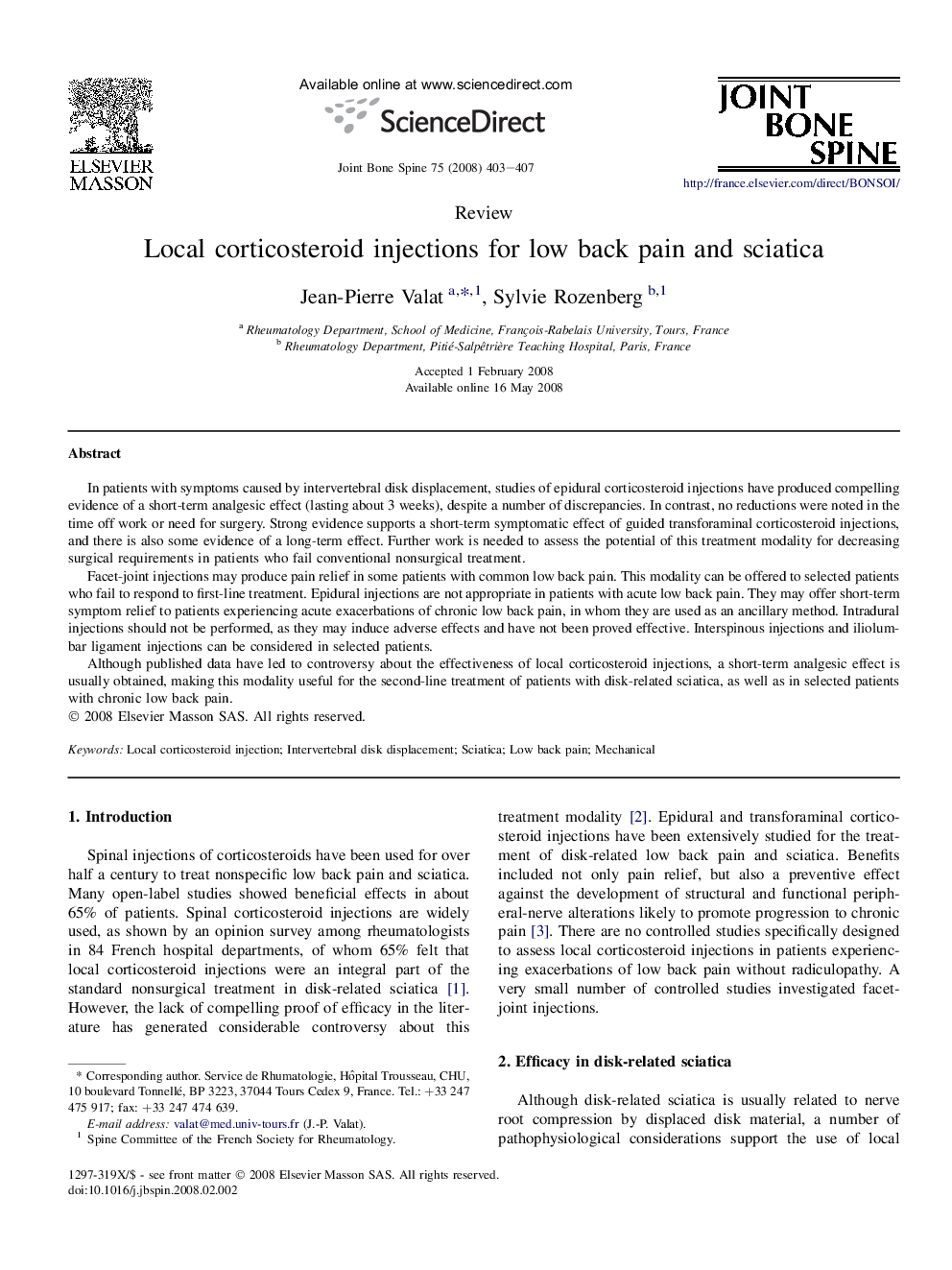| Article ID | Journal | Published Year | Pages | File Type |
|---|---|---|---|---|
| 3366829 | Joint Bone Spine | 2008 | 5 Pages |
In patients with symptoms caused by intervertebral disk displacement, studies of epidural corticosteroid injections have produced compelling evidence of a short-term analgesic effect (lasting about 3 weeks), despite a number of discrepancies. In contrast, no reductions were noted in the time off work or need for surgery. Strong evidence supports a short-term symptomatic effect of guided transforaminal corticosteroid injections, and there is also some evidence of a long-term effect. Further work is needed to assess the potential of this treatment modality for decreasing surgical requirements in patients who fail conventional nonsurgical treatment.Facet-joint injections may produce pain relief in some patients with common low back pain. This modality can be offered to selected patients who fail to respond to first-line treatment. Epidural injections are not appropriate in patients with acute low back pain. They may offer short-term symptom relief to patients experiencing acute exacerbations of chronic low back pain, in whom they are used as an ancillary method. Intradural injections should not be performed, as they may induce adverse effects and have not been proved effective. Interspinous injections and iliolumbar ligament injections can be considered in selected patients.Although published data have led to controversy about the effectiveness of local corticosteroid injections, a short-term analgesic effect is usually obtained, making this modality useful for the second-line treatment of patients with disk-related sciatica, as well as in selected patients with chronic low back pain.
